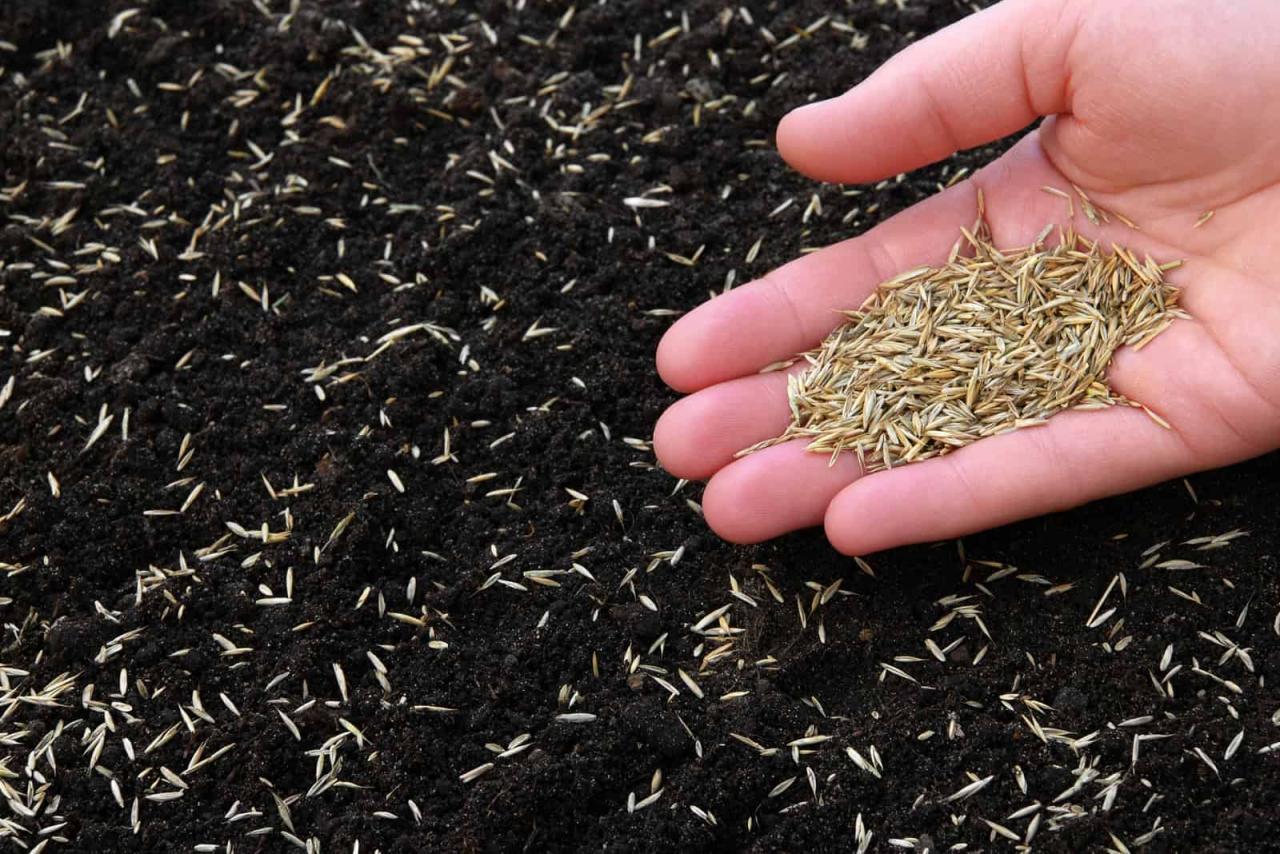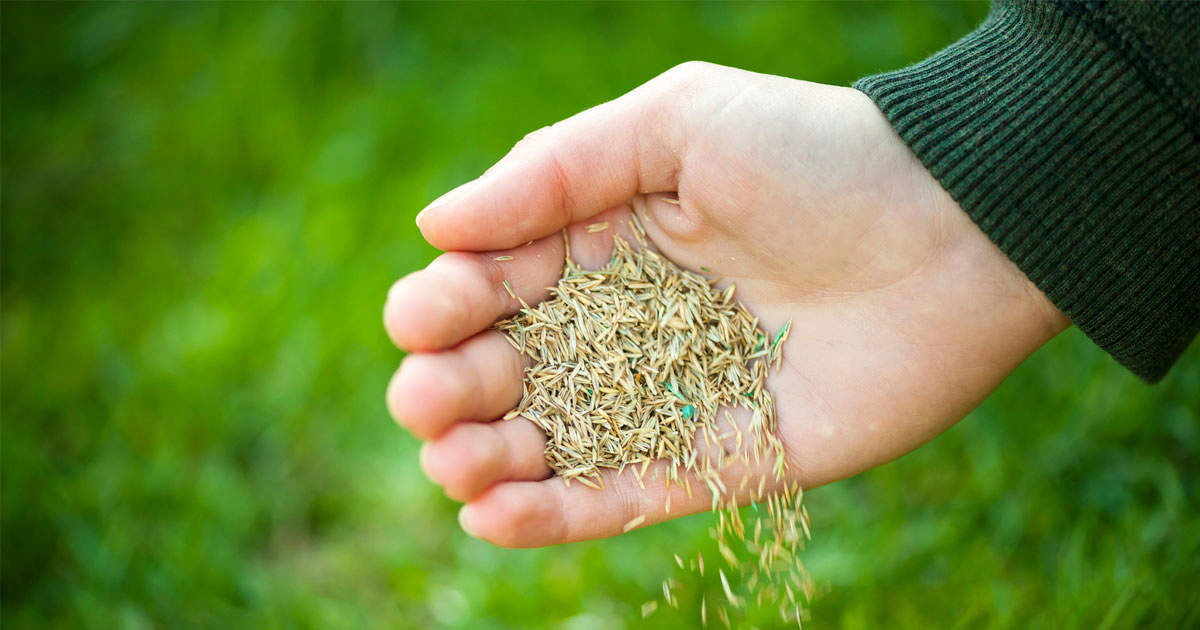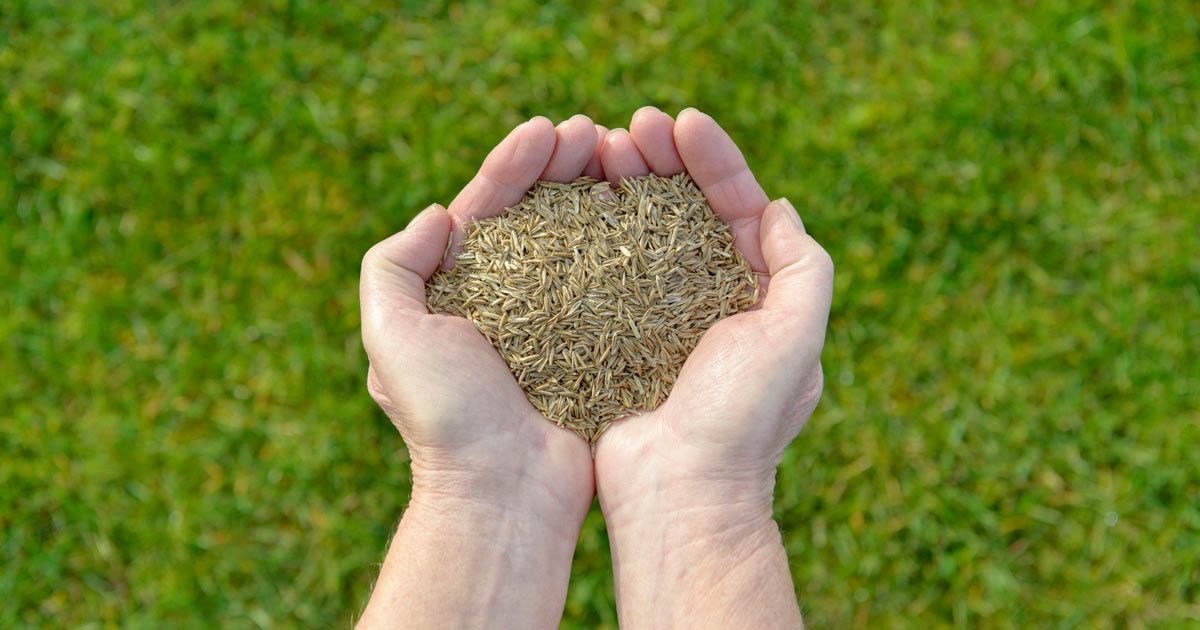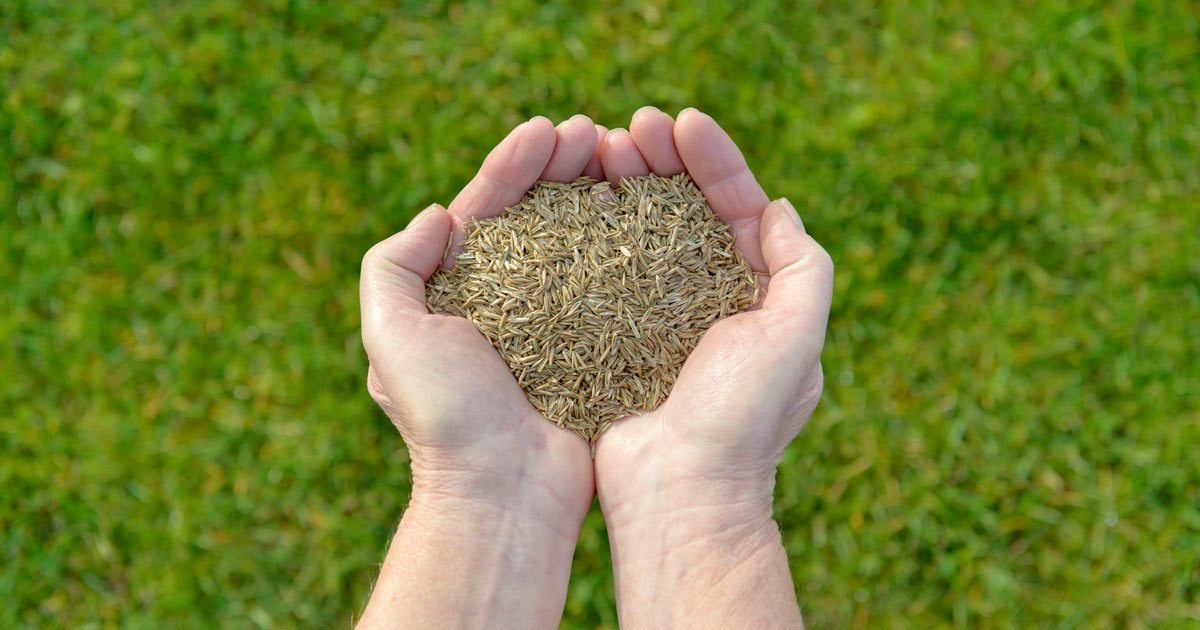Avoid These Mistakes! The Best Time to Sow Grass Seed in the UK sets the stage for this enthralling narrative, offering readers a glimpse into a story that is rich in detail with search engine journal author style and brimming with originality from the outset.
A lush, green lawn is the envy of many homeowners, but achieving this verdant paradise requires more than just throwing down some grass seed and hoping for the best. Understanding the ideal time to sow grass seed in the UK is crucial for a thriving lawn, and there are several common mistakes that can sabotage your efforts.
This guide delves into the intricacies of grass seed sowing in the UK, providing insights into the best times for planting, common mistakes to avoid, and essential tips for a successful lawn. From the nuances of spring and autumn sowing to the importance of soil preparation and watering, we’ll cover everything you need to know to cultivate a healthy and vibrant lawn.
Understanding the Best Time to Sow Grass Seed in the UK

Knowing when to sow grass seed is crucial for achieving a lush, healthy lawn. Timing is everything when it comes to grass seed germination and establishment, as it directly impacts the success of your lawn. Understanding the ideal time to sow grass seed in the UK requires considering the country’s unique climate and the growth patterns of grass.
The Concept of Dormant and Active Seasons
Grass, like most plants, has periods of active growth and periods of dormancy. The dormant season, typically during the winter months, is when grass growth slows down considerably. The active season, during spring and summer, is when grass growth is at its peak.
Understanding these seasons is essential for determining the best time to sow grass seed.
The UK’s Climate and Its Influence on Grass Seed Germination
The UK’s climate is temperate, characterized by mild winters and warm summers. This climate allows for a longer growing season compared to colder regions, but it also presents challenges for grass seed germination. The ideal temperature for grass seed germination is between 15°C and 25°C.
Here’s how the UK’s climate influences grass seed germination:
- Spring (March to May):Temperatures are generally mild, providing ideal conditions for grass seed germination. However, spring can be unpredictable, with occasional cold snaps and frost that can hinder germination.
- Summer (June to August):Summer temperatures can be high, which can lead to rapid evaporation and drying of the soil, making it difficult for grass seed to germinate.
- Autumn (September to November):Autumn is generally considered the best time to sow grass seed in the UK. Temperatures are still mild, but the soil is warm enough for germination. The cooler temperatures and increased rainfall in autumn create optimal conditions for root development and establishment.
- Winter (December to February):Winter temperatures are too cold for grass seed to germinate effectively.
Autumn Sowing
Autumn sowing, also known as overseeding, offers a compelling alternative to spring sowing, particularly in the UK climate. This method leverages the cooler temperatures and increased moisture of the autumn months to create favorable conditions for grass seed germination and establishment.
Autumn Sowing Advantages and Disadvantages
The UK’s mild winters and regular rainfall create an environment conducive to successful autumn sowing. However, it’s crucial to weigh the advantages and disadvantages against spring sowing to determine the best approach for your specific situation.
- Cooler Temperatures:Autumn’s moderate temperatures provide a more comfortable environment for germinating grass seeds compared to the scorching summer heat. This allows for better root development and a healthier start for the new lawn.
- Increased Moisture:Autumn brings increased rainfall, ensuring adequate moisture for seed germination and early growth. This reduces the need for frequent watering, which can be challenging during dry summer months.
- Reduced Competition:The cooler temperatures and shorter days of autumn slow down the growth of existing weeds, reducing competition for resources and increasing the success rate of new grass seed establishment.
- Stronger Roots:Grass sown in autumn has more time to develop a robust root system before the harsher winter conditions arrive. This makes the lawn more resilient to frost and winter damage.
- Faster Establishment:Due to the favorable conditions, autumn-sown grass can establish faster than spring-sown grass, leading to a thicker, healthier lawn sooner.
- Potential for Disease:While autumn offers numerous advantages, it’s important to be aware of the potential for fungal diseases. Cooler temperatures and high humidity can create favorable conditions for disease development.
Ideal Months for Autumn Sowing in the UK
The ideal months for autumn sowing vary across different regions of the UK, depending on the local climate and weather patterns.
- Southern England:September and October are generally considered the best months for autumn sowing in southern England. These months offer a balance of warmth and moisture, allowing for optimal germination and establishment.
- Northern England and Scotland:Due to cooler temperatures and shorter daylight hours, the ideal window for autumn sowing in northern regions is typically shorter. September is often the best month, with early October potentially suitable depending on the weather conditions.
- Wales:Similar to northern England, September is the preferred month for autumn sowing in Wales, with early October potentially viable if weather conditions permit.
Common Mistakes to Avoid When Sowing Grass Seed
Sowing grass seed is a crucial step in establishing a healthy and vibrant lawn. However, even experienced gardeners can make mistakes that hinder their efforts. Understanding and avoiding these common pitfalls can significantly improve your chances of success.
Just like knowing the ideal time to sow grass seed in the UK is crucial for a lush lawn, understanding the nuances of flavor profiles is key to culinary success. For instance, when substituting for bay leaves, consider the subtle differences in flavor profiles, as outlined in How to Achieve Perfect Flavors with Bay Leaf Substitutes.
Similarly, understanding the optimal sowing window for grass seed, whether spring or autumn, will ensure healthy growth and a vibrant green lawn.
Common Mistakes and Solutions
To ensure your lawn thrives, it’s essential to avoid these common mistakes during the grass seed sowing process.
Mistake |
Consequence |
Solution |
|---|---|---|
Sowing too early or late in the season |
Poor germination, slow growth |
Adhere to the recommended sowing times for your region. |
Using the wrong type of grass seed |
Unhealthy lawn, susceptible to diseases |
Choose seed varieties suited to your soil type, sunlight exposure, and desired lawn use. |
Improper soil preparation |
Uneven growth, poor drainage |
Ensure proper soil aeration, fertilization, and leveling. |
Inadequate watering |
Seed drying out, stunted growth |
Maintain consistent moisture, especially during the initial germination period. |
Additional Mistakes to Avoid
Beyond the initial sowing, there are other common mistakes that can impact the health and appearance of your new lawn.
Mistake |
Consequence |
Solution |
|---|---|---|
Over-seeding |
Competition for resources, uneven growth |
Follow recommended seed rates for your lawn size. |
Using too much fertilizer |
Seed burn, stunted growth |
Apply fertilizer sparingly, following product instructions. |
Not protecting the new lawn |
Damage from foot traffic, pets, or weather |
Fence off the area, avoid walking on it, and use protective netting. |
Not mowing correctly |
Uneven growth, weak lawn |
Mow at the right height, avoid scalping, and use sharp blades. |
Best Practices for Successful Grass Seed Sowing
To achieve a thriving lawn, following best practices for sowing grass seed is crucial. This involves careful preparation of the soil, selecting the right seed type, sowing the seed properly, providing adequate watering, and maintaining the new lawn.
Preparing the Soil
Preparing the soil is essential for successful grass seed germination and growth. This involves removing existing vegetation, breaking up compacted soil, and adding nutrients.
- Remove Existing Vegetation:Clear the area of any existing vegetation, including weeds, grass, or debris. This can be done manually with a trowel or by using a non-selective herbicide.
- Break Up Compacted Soil:Compacted soil hinders root growth. Use a garden fork or a rotary tiller to loosen the soil to a depth of 6-8 inches.
- Amend the Soil:Improve soil drainage and fertility by adding organic matter such as compost or well-rotted manure.
- Test Soil pH:A soil test will determine the pH level of your soil. Ideally, the pH should be between 6.0 and 7.0 for most grasses. If the pH is too low, you can add lime to raise it. If it’s too high, you can add sulfur to lower it.
Timing is crucial when sowing grass seed in the UK, as it directly affects germination and establishment. While soil temperature is a key factor, don’t forget about the importance of proper care for your new lawn. Just like with a delicate plant like a Rodgers, ensuring optimal growing conditions is essential.
For tips on maximizing the health and growth of your Rodgers plant, check out this helpful guide: How to Get Your Rodgers Plant to Grow Faster and Healthier. Applying these principles to your new lawn will help you avoid common mistakes and achieve a lush, healthy lawn.
Selecting the Right Grass Seed
Choosing the right grass seed type is vital for a healthy and thriving lawn. Factors to consider include the type of grass, its growth habit, and its suitability for your climate and soil conditions.
- Choose a Grass Mix:A grass mix typically contains several different types of grass, each with unique characteristics. This helps create a more resilient and diverse lawn.
- Consider Your Needs:If you want a low-maintenance lawn, choose a blend that includes drought-tolerant grasses. If you have children or pets, consider a wear-resistant mix.
- Consult a Local Expert:Seek advice from a local garden center or landscaping professional to determine the best grass seed mix for your specific needs.
Sowing the Seed
Sowing the seed correctly ensures proper germination and even coverage.
- Spread the Seed Evenly:Use a seed spreader to ensure even distribution of the seed across the area.
- Sowing Depth:The recommended sowing depth for most grass seeds is 1/4 to 1/2 inch.
- Rake the Seed In:Gently rake the seed into the soil to ensure good contact and prevent it from being blown away by the wind.
Watering the New Lawn
Consistent watering is essential for the establishment of a new lawn.
- Water Frequently:Water the newly sown grass seed several times a day, keeping the soil consistently moist but not soggy.
- Avoid Deep Watering:Deep watering can wash the seed away or cause it to rot.
- Water in the Morning:Watering in the morning allows the grass to dry before nightfall, reducing the risk of fungal diseases.
- Reduce Watering as the Grass Grows:Gradually reduce the frequency of watering as the grass grows and establishes roots.
Maintaining the New Lawn
Maintaining a new lawn involves regular mowing, fertilization, and pest control.
- Mow Regularly:Mow the grass when it reaches a height of 2-3 inches. Mowing regularly encourages tillering, which produces a denser, healthier lawn.
- Fertilize:Apply a balanced fertilizer to the lawn in the spring and fall. This provides essential nutrients for healthy growth.
- Control Pests:Monitor the lawn for pests and diseases. Use appropriate control measures to prevent infestations or outbreaks.
Additional Tips for a Thriving Lawn: Avoid These Mistakes! The Best Time To Sow Grass Seed In The UK

To ensure your lawn thrives, consider these additional tips that go beyond the ideal sowing time. These practices enhance your lawn’s health, resilience, and aesthetic appeal.
Choosing the Right Grass Seed for Your Lawn, Avoid These Mistakes! The Best Time to Sow Grass Seed in the UK
Selecting the appropriate grass seed is crucial for a healthy and vibrant lawn. Different grass types thrive in varying conditions, making it essential to choose a blend suited to your specific needs.
- High-Traffic Areas:For areas experiencing heavy foot traffic, opt for a blend of durable grasses like Kentucky bluegrass, perennial ryegrass, and fine fescue. These grasses are known for their resilience and ability to withstand wear and tear.
- Shady Areas:If your lawn receives limited sunlight, choose shade-tolerant grasses like fine fescue, creeping red fescue, and rough bluegrass. These grasses can thrive in low-light conditions, providing a lush green cover.
- Drought-Tolerant Lawns:For regions experiencing dry spells, consider drought-resistant grasses like tall fescue, zoysia grass, and Bermuda grass. These grasses are known for their water-conserving abilities and can withstand periods of limited rainfall.
The Benefits of Soil Testing
A soil test provides valuable insights into your lawn’s nutrient composition and pH levels. This information is crucial for determining the best fertilizer and soil amendments to promote healthy growth.
- Nutrient Deficiency:A soil test can identify any nutrient deficiencies, allowing you to apply targeted fertilizers to address specific needs. For instance, a deficiency in nitrogen can result in stunted growth and a pale green color, while phosphorus deficiency can lead to poor root development.
- pH Levels:Soil pH influences nutrient availability and the effectiveness of fertilizers. A soil test reveals the pH level, enabling you to adjust it with appropriate amendments. For instance, lime can raise the pH of acidic soil, while sulfur can lower the pH of alkaline soil.
Regular Lawn Maintenance
Consistent lawn maintenance is essential for maintaining a healthy and aesthetically pleasing lawn.
- Mowing:Regular mowing encourages healthy growth and prevents the lawn from becoming overgrown. Aim to mow at the recommended height for your grass type, leaving the clippings on the lawn to provide natural nutrients.
- Weeding:Regularly remove weeds to prevent them from competing with your grass for resources. You can manually pull weeds or use herbicides, ensuring they are safe for your grass type.
- Aeration:Aeration helps improve soil drainage and allows air, water, and nutrients to reach the roots. This practice is particularly beneficial for compacted soils and can be done using a core aerator.
Final Wrap-Up

Sowing grass seed in the UK is a rewarding endeavor that can transform your outdoor space into a verdant oasis. By understanding the ideal times for planting, adhering to best practices, and avoiding common mistakes, you can increase your chances of success.
Whether you choose spring or autumn sowing, remember to prepare your soil meticulously, select the right seed, and provide consistent care for a thriving lawn that will bring joy for years to come.
FAQ Insights
What is the best type of grass seed for a UK lawn?
The best type of grass seed for a UK lawn depends on your specific needs and preferences. Consider factors like soil type, sunlight exposure, and desired lawn use (e.g., high traffic areas, shade, drought-tolerant). Consult with a local garden center or lawn care professional for personalized recommendations.
How long does it take for grass seed to germinate in the UK?
Grass seed germination time varies depending on the type of seed, soil temperature, and moisture levels. In general, it can take anywhere from 7 to 21 days for grass seed to germinate in the UK.
How often should I water newly sown grass seed?
Newly sown grass seed requires consistent moisture to germinate and establish. Water deeply and frequently, ensuring the soil remains moist but not waterlogged. Aim for 2-3 times per day during the initial germination period, gradually reducing watering as the grass grows.
Can I use a lawnmower on newly sown grass seed?
Avoid mowing newly sown grass seed until it reaches a height of 2-3 inches. This allows the roots to establish and prevents damage from the mower blades. Once the grass is tall enough, mow at a high setting to encourage healthy growth.
